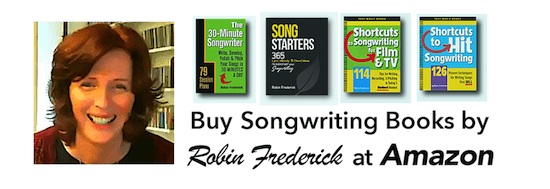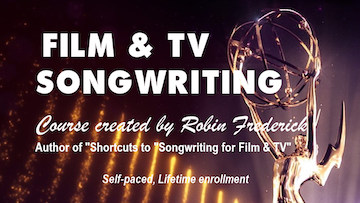
Ingrid Michaelson has had over 90 original songs used in dozens of TV shows, films, trailers, and commercials, most them placed multiple times. And that’s excluding performances on competition shows—I’m just talking about episodic TV series, movies, and national commercials. I haven’t found any other artist who comes close to that achievement! Sounds like a record for song sync placements to me.
Michaelson built her career on television uses. Multiple featured placements in Grey’s Anatomy alongside big commercials for brands like Old Navy and Travelers Insurance got the attention of fans and music supervisors. This was followed by success on radio and streaming sites. This year she has a Broadway show, The Notebook, which features 21 of her original songs. She definitely keeps busy.
Through all of this, Michaelson has maintained control of both her recordings and music publishing. She has never had a Top Ten single, but by using the exposure she gets from television, she keeps her music in front listeners, continually creating new fans.
STUDY SUCCESS TO BE SUCCESSFUL
As in any business, studying success in your field is a great way to learn what works. Michaelson has an unerring instinct for songs that will work in film, TV scenes, and commercials, so let’s take a look at a few of her songs to see what she knows. Then try it in your next song!
Five things Ingrid is doing in her songs…
1) THE STAND-ALONE CHORUS
A stand-alone chorus features a lyric that is complete in itself—it doesn’t need a verse to explain it. When songs are used in film and TV scenes, the verses are often underneath dialogue, only the chorus is in the clear where it can be heard. So the chorus lyric needs to stand on its own without any additional explanation.
Just as important, it needs to say something that clearly expresses a single emotion, one that might be the focus of a scene. Don’t overwrite your chorus for film and TV. The lyric can be poetic or a simple statement of feeling, but it needs to clearly convey the emotion you want to get across.
Here’s the chorus of Ingrid Michaelson’s latest release, featured on Station 19 last month.
All the light I’m seeing
Is coming from you
All the light I’m needing
Is coming from you
And it never ends
And it never ends
And it never ends — “It Never Ends” (chorus)
No need to explain what the emotion is here; she’s singing about the lasting, nurturing quality of real love. There are many scenes that could use a chorus like this.
Find out more on Amazon.com. If you’ve already got a book, leave a review!
2) COMMON FILM & TV THEMES
A song lyric that focuses on emotions you often see in episodic TV or commercials has a better chance of being placed than one that deals with uncommon or highly complicated emotions.
For example, “I want my life to be better” is a feeling that runs through a lot of scenes. When things get a little crunchy, well, a song like this one is just what you need. This song has been used in multiple hit TV series, films, and three major brand commercials.
Watch on YouTube: “Be OK” – Travelers Insurance commercial.
Michaelson will often sum up her lyric theme in a one- or two-line refrain…
You take me the way I am. – “The Way I Am”
Everybody, everybody wants to love
Everybody, everybody wants to be loved – “Everybody”
If the refrain is also the title of the song, the music supervisor can easily get a feel for the type of scene that the song will work in.
The first book and still the ONLY book dedicated solely to the craft of Film & TV songwriting! Read it before you pitch.

3) CREATIVE SONG STRUCTURES THAT WORK
In Michaelson’s songs, verses and choruses are easy to pick out, but they might not be what you expect.
In “Be OK,” the song structure is Verse/Verse/Bridge/Verse (AABA) but the song has two distinct bridges. You can hear the same structure in Sting’s “Every Breath You Take,” a song that’s been used in more than 20 TV series. It works.
Michaelson’s song “Light Me Up” has been featured in a movie trailer plus at least seven TV series. Nestled in the middle of its powerful, repeated chorus hook (“light me up again”) is a huge dynamic build in the melody (“And you don’t hold back…” at 1:32 and 2:37). Normally this would be a pre-chorus, but instead it gives the chorus a huge shot of energy right in the middle. How odd is that! Take a listen and see what you think.
Watch on YouTube. “Light Me Up Again” lyric video.
4) VOCAL MELODIES WITH RHYTHM AND MOTION
Michaelson starts her song “Girls Chase Boys” with a very catchy chorus. This melody has plenty of motion—an octave jump downwards in the first two lines, a high-end “ooooh” vocalization on the third line, and an upward leap on the last line. A melody like this has a lot of ear-catching vitality. It works well for commercials, TV promos, and scenes that need a boost of energy.
Also notice how the first two melody lines speed along with the same regular note rhythm. Then the note rhythm changes to a more syncopated, irregular rhythm on the third line and winds up with a series of short notes (girls–chase–boys–chase–girls). Watch the lyric video and listen to the chorus melody to hear this combination of high-low jumps and steady vs. syncopated note rhythm.
Watch on YouTube. “Girls Chase Boys” lyric video.
NOTE: Not all Film and TV scenes use this type of melody. Darker, more intimate dramas often lean toward an ambient, atmospheric melody style.
5) USE A MUSICAL ARRANGEMENT THAT SUPPORTS AND ADDS IMPACT TO THE LYRIC.
In film and TV, songs aren’t done when we’ve finished the melody and lyrics; they have to be arranged and produced as well. I recommend having a reference song in mind for production by the time you finish the first draft of your lyric or even before. You can start with a groove or instrumental arrangement from another song in your mind while you’re writing. You won’t copy it, but you can use the energy of the groove or dynamic build as inspiration. It’ll save you time and money.
“Keep Breathing” – This song was effectively used in a long scene that built up to a huge climax. The song itself has a long, slow dynamic sweep that builds to a peak of tension, giving the scene added power. This type of build is a favorite with today’s music supervisors. Songs like this one or “Say Something” by A Great Big World, “Youth” by Daughter, or “Blackout” by Freya Ridings all feature dynamic builds that raise the tension as they move along.
Watch the scene from Grey’s Anatomy on YouTube.
“Girls Chase Boys” – This arrangement features a low, bass piano note followed by a high riff. It’s a jump of several octaves creating a tipsy, motion-filled sensation for the listener that fits right into the notion of the circular chase in the lyric. Good for scenes with offbeat energy or situations.
“Be OK” – A quirky production like this one works best in light-hearted or comic scenes. Michaelson’s sweet, bouncy voice adds a youthful, hopeful feel to the song. The ukulele (or a capo’d-up rhythm guitar) playing a high, skippy groove propels the energy forward and upward. You can achieve a similar feel by playing a syncopated groove in a high octave on piano or synth.
Find out more about learning to arrange by listening.
TRY IT NOW
Listen to some of the songs referred to in this email. Think about whether you’re using these five techniques to make your songs film and TV friendly. Try one or all of them in your next song.
READ MORE HIT SONG GUIDES ON THIS SITE and learn from the hits!


